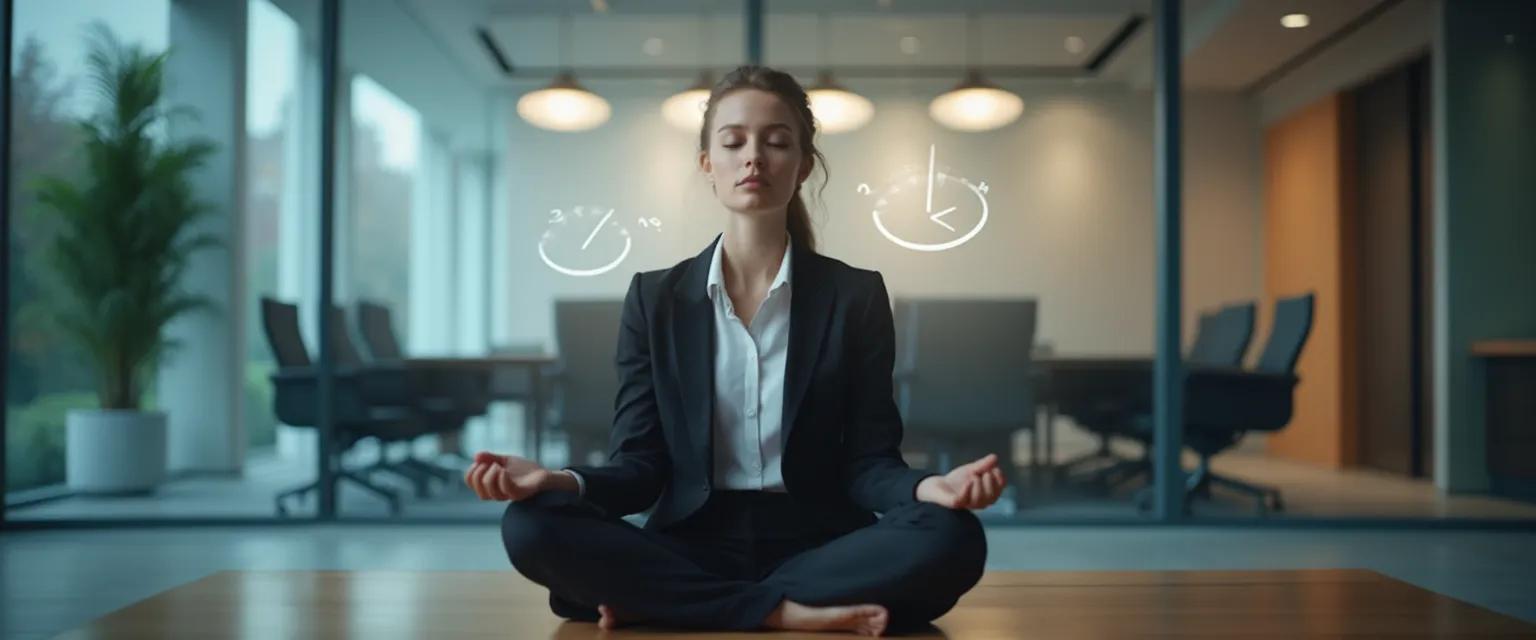5-Minute Office Meditation to Calm Your Mind Between Meetings
Ever feel like your mind is a browser with 37 tabs open during your workday? You're not alone. In today's high-pressure work environments, finding moments to reset between meetings and tasks isn't just nice—it's necessary. Implementing meditation to calm the mind during your workday can transform how you experience stress, make decisions, and interact with colleagues. Even five minutes can make a remarkable difference.
Neuroscience confirms what meditation practitioners have known for centuries: brief meditation to calm the mind activates your parasympathetic nervous system, reducing cortisol levels and clearing mental fog. One study found that just 5 minutes of mindfulness practice improved decision-making ability by 23% and reduced perceived stress by 15%. For busy professionals, these stress management techniques provide maximum benefit with minimal time investment.
The beauty of these practices is their simplicity—no special equipment, no awkward poses, just your attention and breath. Let's explore how to integrate meditation to calm the mind into even the busiest workday schedule.
3 Simple Desk Meditation Techniques to Calm Your Mind
When deadlines loom and tensions rise, these discreet meditation to calm the mind practices can be your secret weapon for maintaining composure and clarity.
The Breath Anchor Technique
This meditation to calm the mind technique uses your breath as a stabilizing force for a racing mind:
- Sit with your feet flat on the floor and hands resting comfortably
- Close your eyes or soften your gaze toward your desk
- Breathe naturally, focusing on the sensation of air entering and leaving your nostrils
- When your mind wanders (and it will), gently redirect attention to your breath
- Continue for 5 minutes, using each breath to anchor you to the present moment
This practice works because it gives your executive function a single, simple focus, interrupting the cycle of rumination and workplace anxiety.
The Quick Body Scan
This desk-friendly meditation to calm the mind releases physical tension that accumulates during stressful workdays:
- Sit upright but comfortable in your chair
- Starting with your feet, bring awareness to each body part moving upward
- Notice sensations without judgment (tension, tingling, temperature)
- Consciously release tension in each area before moving to the next
- End with attention to your face, releasing jaw tension and softening your expression
The body scan is particularly effective because stress manifests physically before we consciously recognize it. This technique interrupts the stress response cycle before it escalates.
The Mindful Minute
When you need the fastest reset, this meditation to calm the mind technique brings you immediately into the present:
- Pause whatever you're doing
- Notice three things you can see, then three you can hear, then three you can feel
- Take three deliberate breaths, extending the exhale longer than the inhale
- Return to your task with refreshed attention
This practice works by activating your sensory awareness, which naturally pulls your mind out of worry spirals and into the present moment.
Strategic Timing: When to Use Meditation to Calm Your Mind
The best meditation to calm the mind practice is one you'll actually do. Strategic implementation at key moments maximizes benefits with minimal disruption to your workflow.
Pre-Meeting Mental Reset
Five minutes before important meetings, use the Breath Anchor technique to calm presentation nerves and sharpen your focus. Research shows that brief emotion regulation practices before high-stakes interactions improve both performance and perception by colleagues.
Post-Conflict Cooling Period
After tense interactions, take a bathroom break if necessary to practice the Body Scan. This meditation to calm the mind technique helps process emotional responses before they affect subsequent work interactions.
Task Transition Moments
Between completing major tasks, use the Mindful Minute to clear residual thoughts before shifting focus. This prevents mental carryover that can compromise fresh thinking on new challenges.
Create environmental triggers for your practice—perhaps a specific notification tone or visual cue on your desk that reminds you to take a meditation moment.
Transform Your Workday with Consistent Mind-Calming Meditation
The real power of meditation to calm the mind emerges through consistent practice. After two weeks of regular five-minute sessions, most practitioners report noticeable improvements in stress resilience, emotional regulation, and cognitive flexibility.
Start with just one scheduled meditation break daily, then gradually expand. Track improvements in your meeting performance, stress levels, and work relationships as evidence of your progress.
Remember that meditation to calm the mind is a skill that develops over time. Each five-minute practice strengthens your ability to direct attention and manage emotions, creating cumulative benefits that extend well beyond the moments of practice themselves.
Ready to transform your workday with these accessible meditation to calm the mind techniques? The path to greater workplace wellbeing begins with just five minutes and a willingness to pause.




